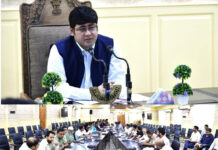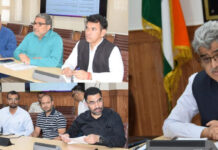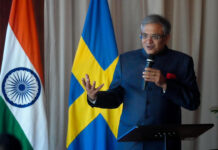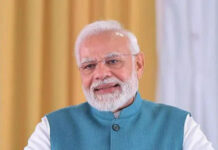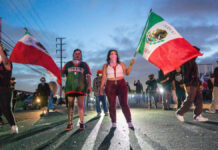COVID-19 super-spreading events, in which one person infected with the novel coronavirus transmits it to many other people, play an “outsized role” in the overall spread of the disease, according to a new study which says preventing large gatherings could significantly curb the pandemic. The study, published in the journal PNAS, assessed about 60 super-spreading events, revealing that events where one person infects more than six other people are much more common than would be expected if the transmission patterns followed statistical distributions commonly used in epidemiology. Based on their findings, the scientists, including those from the Massachusetts Institute of Technology (MIT) in the US, developed a mathematical model of COVID-19 transmission, which they used to show that limiting gatherings to 10 or fewer people could significantly reduce the overall number of infections. “Super-spreading events are likely more important than most of us had initially realised. Even though they are extreme events, they are probable and thus are likely occurring at a higher frequency than we thought,” said James Collins, senior author of the new study. “If we can control the super-spreading events, we have a much greater chance of getting this pandemic under control,” Collins said. For the novel coronavirus, the scientists said the “basic reproduction number” is around three, meaning that on average, each person infected with the virus spreads it to about three other people. However, they said this number varies widely from person to person, with some who don’t spread the disease to anyone else, while “super-spreaders” infect dozens of individuals. “We figured that an analysis that’s rooted in looking at super-spreading events and how they happened in the past can inform how we should propose strategies of dealing with, and better controlling, the outbreak,” said Felix Wong, another study co-author from MIT. In the research, the scientists defined super-spreaders as individuals who passed the virus to more than six other people. Using this definition, they identified 45 super-spreading events from the current COVID-19 pandemic, and 15 additional instances from the 2002-03 SARS pandemic outbreak, all documented in scientific journal articles. According to the researchers, during most of these events, between 10 and 55 people were infected, but two of them, both from the 2003 outbreak, involved more than 100 people. Typically, events in which the disease spreads to dozens of people would be considered very unlikely, they said. However, the MIT team found that this was not the case for coronavirus super-spreading events. The scientists found that even though super-spreading events are extreme, they are still likely to occur. “This means that the probability of extreme events decays more slowly than one would have expected,” Wong said. “These really large super-spreading events, with between 10 and 100 people infected, are much more common than we had anticipated,” he added. According to the researchers, many factors may contribute to making someone a super-spreader, including their viral load and other biological factors. They did not address these factors in this study, but the scientists modelled the role of connectivity — defined as the number of people that an infected person comes into contact with. In order to study the effects of connectivity, the scientists created and compared two mathematical network models of disease transmission. In each, the average number of contacts per person was 10, but they designed one model to have an exponentially declining distribution of contacts, while in the other, some people had many contacts. The researchers found that in the latter model, many more people became infected through super-spreader events. However, the study noted that the transmission stopped when people with more than 10 contacts were taken out of the network and assumed to be unable to catch the virus. Based on the results, the researchers said preventing super-spreading events could have a significant impact on the overall transmission of COVID-19. “It gives us a handle as to how we could control the ongoing pandemic, which is by identifying strategies that target super-spreaders,” Wong said. “One way to do that would be to, for instance, prevent anyone from interacting with over 10 people at a large gathering,” he added.

Dogra Herald is the media of J & K, breaking language and geographical barriers, connecting J & K to the rest of India.
0191 245 4946
info@dograherald.com
Latest articles
Five bank accounts of drug cartel frozen in Kashmir: ANTF
iamjkstarr - 0
JAMMU: The Anti Narcotics Task Force (ANTF) on Monday froze five bank accounts amounting to over Rs 54.27 lakh of a drug...
Man-Merag village in Ladakh gets tap water connections
iamjkstarr - 0
LEH: As India celebrates "Azadi Ka Amrit Mahotsav" commemorating 75 years of Independence, Man-Merag village located close to the Line of Actual...
WTC Table: India take top spot, Pakistan and West Indies tied at second
iamjkstarr - 0
DUBAI: Indian men's cricket team has now taken the top spot in the World Test Championship (2021-2023) points table, with West Indies...

